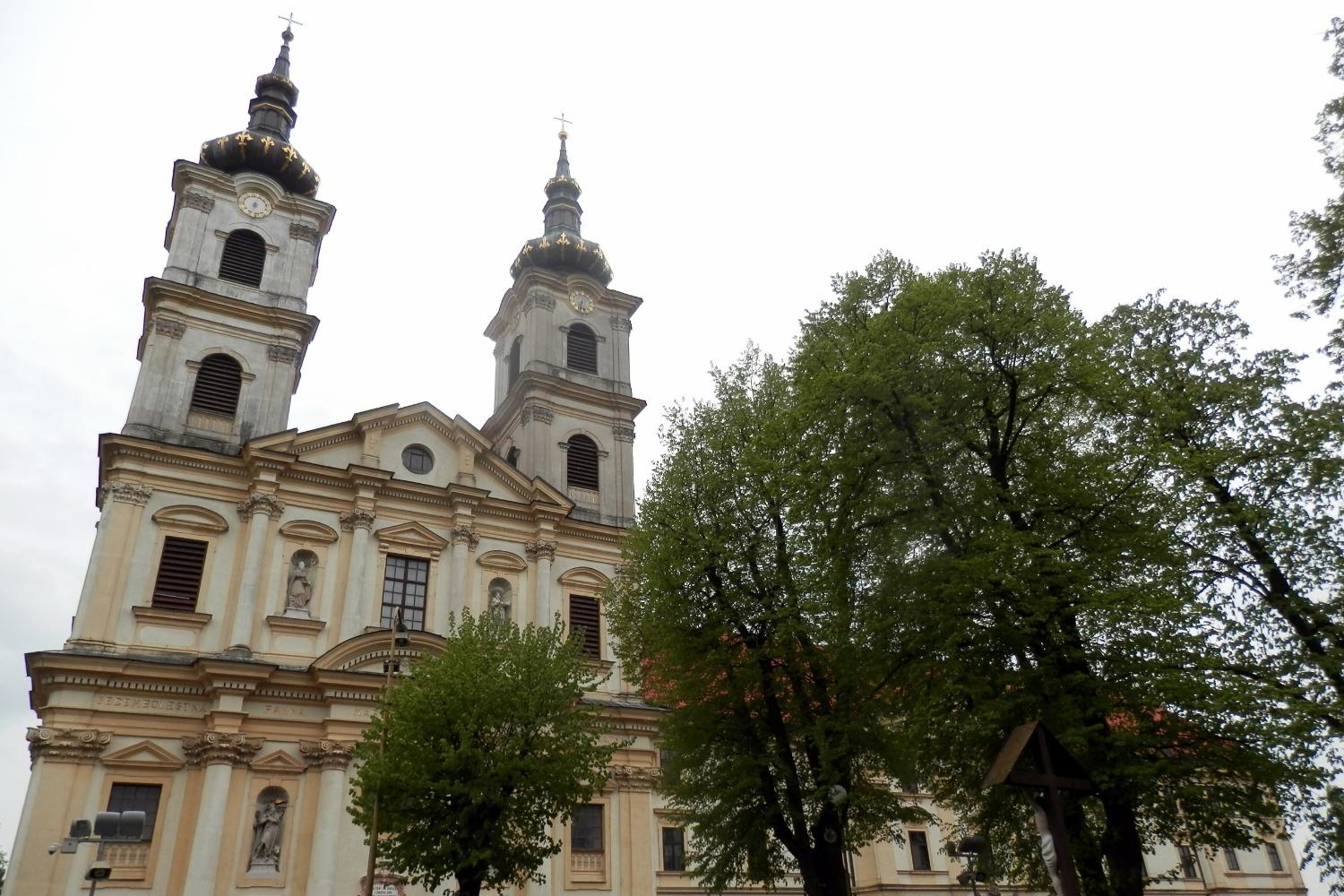
Pope Francis concluded his 2021 pastoral visit to the eastern European country of Slovakia with a closing Mass on the feast of Our Lady of Sorrows, held at a pilgrimage site beloved among Slovaks, the Basilica of Our Lady of Sorrows in Šaštín-Stráže. A church was first built there in the early eighteenth century, and the current structure was consecrated in 1762 in the presence of Empress Maria-Theresa at a time when the Hapsburg Monarchy was at its height.
It has been said that God writes straight with crooked lines. The origins of the Basilica might provide an example of that kind of oblique writing. The story goes like this. It was 1564, and the Ottoman Turks were marauding. A certain Countess Angelica had taken to the woods with her husband in a carriage to hide from the invaders. Their marriage was not a happy one, and Angelica had long been praying that it might improve. In the midst of their flight she and her husband quarreled, and he pushed her out of the carriage and left her alone, stranded in the forest. In her fear and her dire need, Angela began praying to the Virgin Mary, asking that Our Lady would protect her and help her find her way out of the woods. She also added an earnest prayer that her marriage would take a different turn and that she and her husband would learn to love each other. She promised that if her prayers were answered she would commission a statue to honor Our Lady of Sorrows. Shortly thereafter her repentant husband reappeared and they were reconciled and began a new and peaceful life together. The two of them arranged for a statue to be made, and it was placed at the site where Angelica had prayed. From then on, the statue became a destination for pilgrims and grew noteworthy for answered prayers. Eventually a church and a monastery were built on the site, and it has since become Slovakia’s most beloved place of pilgrimage. Pope John Paul paid a visit there in 1995.
The Church is a large and stately structure, a fine example of Austrian Baroque architecture. It has been said that the Baroque inherited the classical features of the Renaissance and set them dancing to the music of the love of God. Baroque architecture is characterized by moving and sweeping lines, by sharp contrasts of color, by lavish decoration, and by a sense of the dramatic. If Gothic architecture can be described as expressing the mystery of faith by evoking the mottled light and darkness of the northern forests, the Baroque aims at representing the blaze of glory found in God’s royal throne room.
Slovakia has not been without a stiff measure of suffering in its recent history, as an arena of conflict and chaos during the Second World War and then as part of the Soviet communist empire. The “velvet revolution” of 1991 and the coming of an independent Slovakia two years later has brought a new chapter in the long history of the Slovak people. May our Lady of Sorrows, the patron saint of Slovakia, watch over that long-suffering people and bring about a new era of faith as God continues his practice of writing straight with crooked lines.
Photo Attribution A: "Bazilika Šaštín-Stráže 17 Slovakia" by Ing.Mgr.Jozef Kotulič is licensed under CC BY-SA 4.0.

The First Draught
To receive the Weekly Update in your inbox every week, along with our weekly Lectio Brevis providing insights into upcoming Mass readings, subscribe to The First Draught.